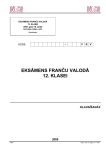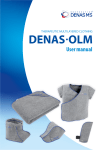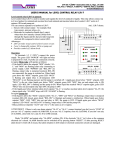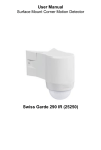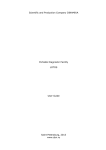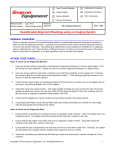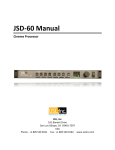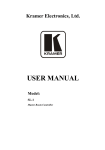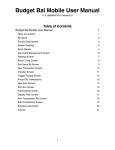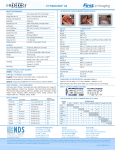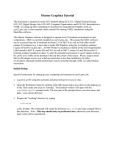Download labor safety regulations for academic personnel
Transcript
Translation PVN Reă. Nr. LV 90000437699, K.Valdemāra ielā 161, Rīgā, LV-1013, tālr.67360133, fakss 67320620, e-pasts: [email protected], http://www.ba.lv LABOR SAFETY REGULATIONS FOR ACADEMIC PERSONNEL Riga April 17, 2009 No.27-11/032 I General Provisions 1.1. Academic personnel of BA School of Business and Finance (hereinafter – the School) are persons who perform pedagogical work in the School pursuant to the requirements established in the Law on Higher Educational Institutions and the work agreement. 1.2. Requirements of the labor safety regulations for academic personnel (hereinafter – Regulations) refer to the academic personnel elected by the School and university lecturers employed by the School on contractual basis. 1.3. Duties of the academic personnel: 1.3.1. to know and comply with the internal procedure regulations; 1.3.2. to know and observe the balance of working hours and breaks based on the working hours and work load; 1.3.3. to know and observe fire safety regulations, to know evacuation routes and location and usage of alarm buttons; 1.3.4. to avoid any action that can cause fire; 1.3.5. to be able to act and use extinguishing devices in the case of fire, to know their locations; 1.3.6. to know and observe electric safety regulations; 1.3.7. to know methods of administering first aid to victims of accidents, the procedure of using and the location of the emergency kit; 1.3.8. to maintain cleanliness and order in workplace; 1.3.9. to meet personal hygiene requirements; 1.3.10. to know and observe the requirements of these instructions. 1 BA School of Business and Finance, Riga, Latvia 1.4. Academic personnel are trained to use technical equipment that is necessary for the academic process and is provided by the Procurement Department or the Information Technology Department. 1.5. Academic personnel sign for the receipt of instructions in the instructions journal. 1.6. The following work environment risk factors may be present: 1.6.1. excess psychoemotional stress; 1.6.2. overstress of the vocal cords; 1.6.3. physical overload (long hours of standing); 1.6.4. inadequate light in the workplace; 1.6.5 . inadequate ventilation; 1.6.6. draught; 1.6.7. temperature fluctuations; 1.6.8. long working hours; 1.6.9. irregular distribution of work load; 1.6.10. street noise; 1.6.11. moving and installing study aids; 1.6.12. electrical equipment wires; 1.6.13. increased risk of infection during the active period of flu epidemics and cold diseases; 1.6.14. trauma from tripping or stumbling over the platform at the board in auditoriums; 1.6.15. trauma from tripping or stumbling on the 161 K.Valdemara Street building stair case (from uneven stair spans, floor mats at the stairs and entrance door). II Labor safety requirements before commencing work 2.1. To arrange the work place in a rational and comfortable order for working, to check the working condition of equipment for presentations. 2.2. To ensure that there is sufficient lighting in the room and turn on ceiling lights if necessary. III Labor safety requirements during work 3.1. To avoid vocal cords being employed constantly – to plan the lectures correctly, by changing the methods during the lecture, to rest the voice when possible, to speak in a calm, steady voice without raising the tone. 2 BA School of Business and Finance, Riga, Latvia 3.2. To avoid fatigue from extended periods of standing, it is advisable to find an opportunity to sit down during the lecture. 3.3. It is obligatory to provide fresh air from adequate ventilation in the auditorium, especially during the activation period of flu epidemic and cold diseases. 3.4. To avoid catching cold, avoid direct exposure to draughts. 3.5. To avoid stumbling when walking around the auditorium, observe the floor carefully for exposed or loose wiring and changes in elevation. 3.6. To take care when in corridors or staircases during breaks to avoid trauma resulting from stumbling and falling on slippery floors or uneven stair treads. 3.7. To keep the workplace in order and avoid smoking in the workplace. 3.8. Having lunch and keeping groceries is allowed only in specially designated areas. 3.9. To inform the Head of the Department about accidents. IV Labor safety requirements upon completion of work 4.1. To turn off the study equipment and restore order in the workplace. 4.2. To close windows after the last lecture. 4.3. To verify that no flammable materials are left in the room. 4.4. To clean the board, to turn off the lights and lock the door. V Labor safety requirements in the event of accidents 5.1. In the event of a disruption in the electrical power supply, to turn off the technical study equipment and inform the Head of the Procurement department. 5.2. In the event of fire: 5.2.1. to call firefighters on the telephone 112, 9-112; 5.2.2. to inform the people responsible for fire safety; 5.2.3. to disconnect the power supply; 5.2.4. to disconnect the ventilation system; 5.2.5. to identify and contain the source of fire, to extinguish the fire (electric appliances can be extinguished only with extinguishing tools that do not conduct electric current, to act according to the user manual and illustrations in them), to rescue people and material values. 5.3. In the event of injuries (traumas): 5.3.1. to discontinue work; 5.3.2. to administer first aid; 3 BA School of Business and Finance, Riga, Latvia 5.3.3. if it bears no threat to the health and lives of other people, to keep the scene intact; 5.3.4.to inform the Head of the respective department. 5.4. In the event of illness: 5.4.1. to discontinue work; 5.4.2. inform the Head of the respective department; 5.4.3. to see the doctor. 5.5. In the event of plumbing emergency: 5.5.1. to discontinue work; 5.5.2. to inform the Deputy Head of the Procurement department. VI Employee’s responsibility for violation of the regulations 6.1. For failure to observe the requirements of the Regulations an employee can be held responsible under disciplinary procedures. 4 BA School of Business and Finance, Riga, Latvia





